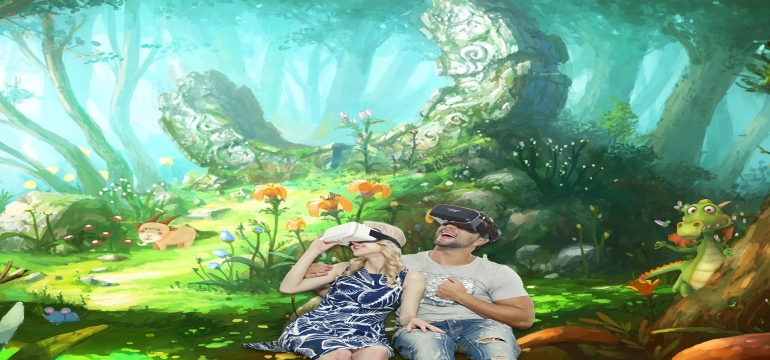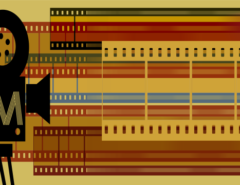With every passing week, we can see more and more use of Virtual Reality in Digital Marketing. Not that almost every marketer is doing this, but an increasing number of marketers are now trying to take advantage of Virtual Reality. Who doesn’t wants to make their potential customers feel the experience of being a customer of their business? And when it comes to make your target audience feel the experience before they become your customers, there is no better way than VR. VR is revolutionizing the concept of storytelling. So this is no wonder why digital marketers are integrating VR into their campaigns to an increasing extent.
By 2020, the VR industry is expected to reach $30 billion, while AR is projected to reach $90 billion by the same year, according to Digi-capital.
Let’s take a quick peek into the reasons and also how does it work.
Why they are integrating Virtual Reality in Digital Marketing?
With VR you can completely surround your target audience with immersive experience about your product. Your potential customers can almost realistically feel the advantage of buying your product, without actually having to buy it. As a marketer, you can engross and engage your target audience into your product experience using VR. This is what they call experiential marketing. And if they like the experience, it is a lot easier for you to convert them into paying customers. This is the most important reason why advanced marketers are using Virtual Reality in digital marketing.
Not only for generating sales, but VR can also be used to enhance emotional attachment of target audience about the brand, which is another major objective of digital marketers. The VR experience is so impactful that users often develop strong emotions about what they experience and in turn about the product. Moreover, the impact makes the experience memorable, thus helping the brand to easily grab the mindshare of the target audience. This makes a great cause why Virtual Reality in digital marketing is picking up pace.
The click through rate of most of the online ads is falling over time. An increasing number of online users either hit the ‘skip’ option, if available, or ignore ads. VR videos and apps being the newest kids on the block are generating high click through rates. People really love VR ads because of the immersive experience they offer. So it is more like that your VR ad will survive the skip or close option of the ad and the user will go through the video. Hence it is always recommended to leverage the latest craze in the online community and make your digital marketing campaign stronger and more impactful by creating VR videos.
Here is an example of a 360 VR video ad.
Some Industries that are leveraging Virtual Reality in Promotion with Wonderful Results
Hospitality Industry
Instead of just touring an empty resort or venue, VR based applications can help potential customers experience how it would feel if they host an event in that venue. VR can bring alive the bits of the venue from the beautiful lawn to the amazing interior to the alluring swimming pool. The vivid details of the facilities in the venue can be communicated using VR tools. All these will surely tempt the potential customers to actually book the place.
Training Industry
While promoting a training program, marketers can now use VR based tools to let the interested candidates experience how the training would be like. Potential trainees can realistically feel how the classes and program delivery are going to be like. Digital marketers can leverage this benefit and convince the target candidates to enrol for their programs.
Medical Industry
Companies in the medical industry are creating VR based symptom simulators to let people experience how they can get relief from their pain if a particular product/ medicine is used.
Patients would understand the benefits of the product/medicine and would probably buy the same.
Fashion Industry
While buying garments, shoes and accessories, most of us love to try different options before finally buying one. Now that online shopping of fashion items is increasing every year, digital marketers are using VR based tools to allow potential customers try different items without actually wearing them. This has multiplied the appeal of the items as users can now experience them easily. Consequently, the success rate of marketers has increased.
Automobile Industry
Some car makers and dealers are now allowing potential customers to test drive cars virtually with VR based tools. Users can feel many aspects of the cars without actually driving the same.
Large brands like McDonald’s, Marriott, Coca-Cola and IKEA are already using VR based tools to tempt their customers into their product experience. Many mid size companies are moving to the VR way for their marketing campaigns. We VR devices becoming household items, we are going to see far more use of Virtual Reality in digital marketing campaigns of companies of different sizes.
Are you integrating Virtual Reality in Digital Marketing? Do you want to start with creating a VR video? We might be able to help you. Just let us know.






















 How To Choose The Right Animated Explainer Video Production Company
How To Choose The Right Animated Explainer Video Production Company How To Make A Great Video For Digital Marketing
How To Make A Great Video For Digital Marketing What Style Of Animated Video Should You Choose For Your Business?
What Style Of Animated Video Should You Choose For Your Business?